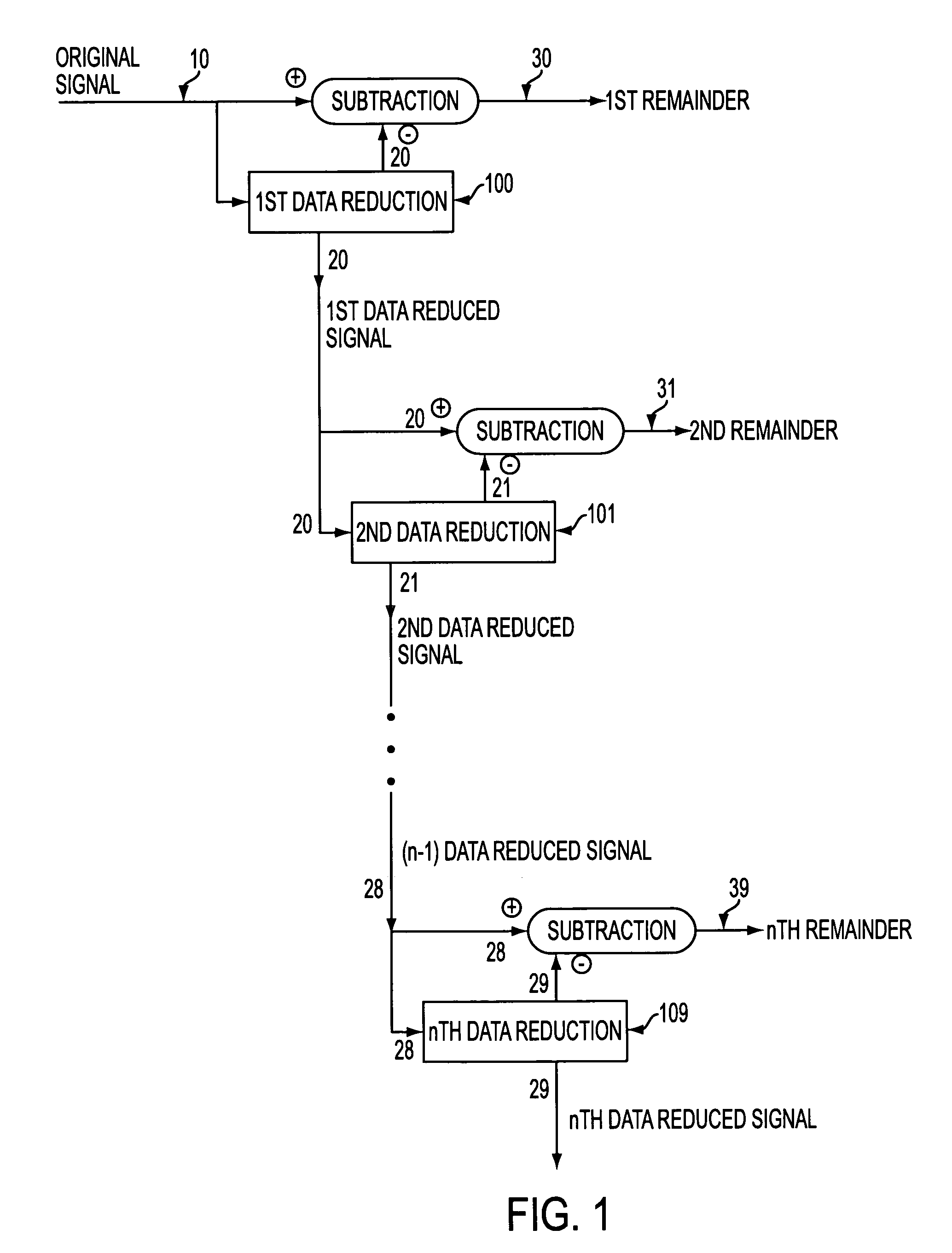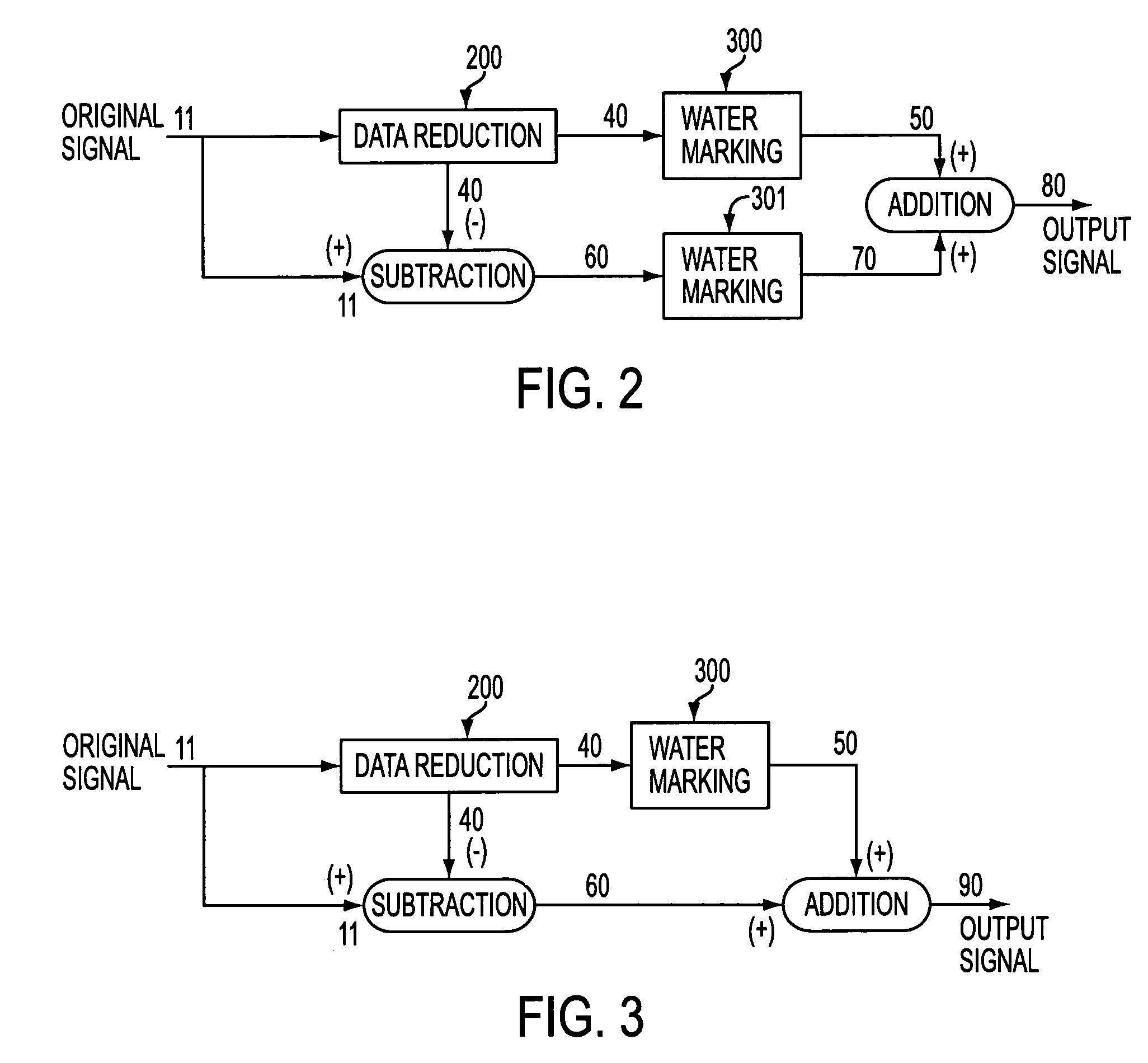Utilizing data reduction in stegnographic and cryptographic systems
a cryptographic and data reduction technology, applied in the field of digital signal processing, can solve the problems of not meeting the needs of prior art and removing proper economic incentives for improving technology, and achieve the effects of improving the security of scrambling and watermarking applications, increasing the overall security of many applications, and being more resistant to analysis
- Summary
- Abstract
- Description
- Claims
- Application Information
AI Technical Summary
Benefits of technology
Problems solved by technology
Method used
Image
Examples
Embodiment Construction
[0083]The embodiments of the present invention and its advantages are best understood by referring to the drawings, like numerals being used for like and corresponding parts of the various drawings.
An Overview
[0084]A system for achieving multiple levels of data reduction is illustrated in FIG. 1. An input signal 10 (for example, instructional text, executable binary computer code, images, audio, video, multimedia or even virtual reality imaging) is subjected to a first data reduction technique 100 to generate a first data reduced signal 20. First data reduced signal 20 is then subtracted from input signal 10 to generate a first remainder signal 30.
[0085]First data reduced signal 20 is subjected to a second data reduction technique 101 to generate a second data reduced signal 21. Second data reduced signal 21 is then subtracted from first data reduced signal 20 to generate a second remainder signal 31.
[0086]Each of the successive data reduced signals is, in turn, interactively subjec...
PUM
 Login to View More
Login to View More Abstract
Description
Claims
Application Information
 Login to View More
Login to View More - R&D
- Intellectual Property
- Life Sciences
- Materials
- Tech Scout
- Unparalleled Data Quality
- Higher Quality Content
- 60% Fewer Hallucinations
Browse by: Latest US Patents, China's latest patents, Technical Efficacy Thesaurus, Application Domain, Technology Topic, Popular Technical Reports.
© 2025 PatSnap. All rights reserved.Legal|Privacy policy|Modern Slavery Act Transparency Statement|Sitemap|About US| Contact US: help@patsnap.com



